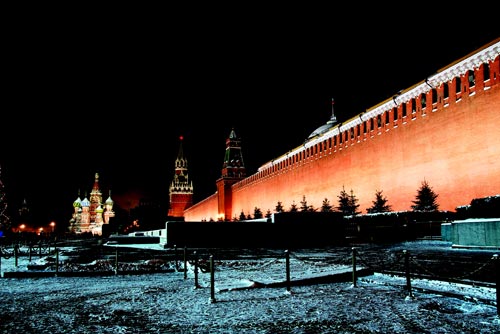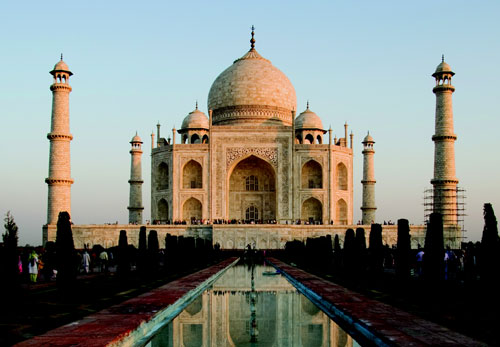
You may find this a sensitive subject, and I can certainly understand why. Yet, we must all face it sooner or later. Death, that is. Now it seems that people of prominence, especially those who possess a great deal of either authority or money, attempt to circumvent this inevitably-final event by erecting monuments of one sort or another. Let me tell you right now, it doesn’t work. It does, however, seem to help the tourist trade. When traveling you continually run across burial places of local heroes. They vary in size and opulence. Some are more popular than others, but each country has its share. Over the years, I have visited a number of burial sites of prominent people and find most of them worth a visit. I often fail to bring the proper reverence to them. Nevertheless I find them interesting, and I strongly encourage you to seek them out and visit them if you can.

Let me share a few of these visits with you. They are presented for your consideration in no special order. Far be it from me to alienate any nation by denigrating their most important heritage.
We’ll start with Russia. One cannot help but be awed when viewing Red Square from its western edge. To your left stands the GUM department store, ahead is the magnificent onion-domed St. Basil’s church, and to your right the dark, foreboding walls of the Kremlin. As you work your way along these walls, you read the names of deceased Soviet heroes—generals who gave their all on the battlefields in both the Russian Revolution and the Second World War, and cosmonauts who first explored space for mother Russia. These human remains entombed in the Kremlin walls are nothing compared to the red marble monument nearby, which houses those of the author of communism, Lenin.
Our visit with Mr. Lenin began as we joined a short queue of mixed civilians and military awaiting their audience. Within minutes we were allowed inside. Here, flanked by guards, lay Mr. Lenin in a gray suit, white shirt, and tie – his moustache and goatee visible. He was completely encased in a glass container and looked quite at ease, just lying there. I would have loved to snap his picture, but I had been warned against this prior to entering. In fact, even stopping to gawk too long was discouraged. We trooped by along with everyone else and soon found ourselves back out in the street.
Just recently I read that the Soviet government was thinking about placing him in a more conventional cemetery. Maybe they have. At any rate, I did visit him some thirty years after he died and found him quite stoic.

Then there is Beijing, China. This visit began in a cobblestone square much larger than Red Square, namely Tienanmen Square near the heart of Beijing. The group we were traveling with was about thirty strong and about as American as can be. The tomb we were headed for was that of Chairman Mao and was much larger than Mr. Lenin’s. Also it had a line of several hundred people waiting for their audience. Our Chinese guide exerted a bit of authority, and we were allowed to cut in very near the front of the line. This bothered me a bit because if I were waiting in line to get into, say the White House in Washington, DC, and a bunch of run-of-the-mill Chinese tourists elbowed in, I’d have complained in a loud voice. Well, here I was doing it to them, and it bothered me. Not enough, however, to go to the back of a two hour line. At any rate, we entered this apparently-sacred shrine. I mention this because all voices became hushed, hats were removed, and a silent double line developed. We passed by Mr. Mao much the same as by Mr. Lenin. Mr. Mao, however, had on, fittingly, his Mao jacket. You know, the one that buttons up to his neck and ends in sort of a clerical collar. The outfit was a pale gray. I felt he looked a lot more robust than most of his pictures. Perhaps he had gained a little weight. We all silently and solemnly paraded by his glass case. Once again, no pictures.
Uncle Ho, or Mr. Ho Chi Minh, was not a lot different from the previous two. We were in Hanoi, Viet Nam, of course, which has a more immediately-remembered past. His mausoleum looked a lot like those of Messrs. Lenin and Mao except it was a trifle larger. Apparently the longer you last, the bigger the building. Uncle Ho’s last resting-place is in the middle of his last living-place. The houses he used, including his own private bomb shelter, surround the back forty of his tomb. He spent a number of years preparing for his leadership role as a cook on board ships, and also in France. Hence, he liked to cook in his kitchen until the end.
Our slow march past his glass case was much like the others. Rumor has it he travels to Moscow for a few months each year on a sort of cosmetic upgrade, and believe me it showed. He looked a lot healthier than the other guys did.

Our India visit occurred in the northwesterly part near the city of Agra. It appears that the Raj who ruled that section of the world found a beautiful young wife. She did her best for him, producing some twenty-one or so children, so the story goes. Unfortunately she gave out before he did, by dying when the last one arrived. This rich ruler built a beautiful shrine for her, and named it the Taj Mahal. It has some magnificent features I’m sure you’ve read about, specifically the reflecting pool and the way the sun turns it a brilliant white at sunset. The ruler and his bride are discreetly entombed on a lower floor, inaccessible to the public. Subsequently this was not as personal a visit as the others since we were kept upstairs.
England is loaded with graves and caskets of people of note. Either the Brits had a lot of early important leaders, or this is a country that wants to preserve its history. I could write a full book on all the people of note I visited here. For example, I stepped over Willy Shakespeare, gawked at King Henry VIII’s cement box, and waved at Lord Nelson in his tomb. The ones I liked best, however, were the side-by-side boxes of Queen Victoria and her consort Prince Albert. It seems Albert gave out at an early age, while Victoria carried on alone without him for many more years. Because Albert died so young, the likeness on top of his coffin showed a youthful and handsome face. Victoria, apparently concerned that a likeness of her on her demise would demonstrate a physical difference, had a likeness of herself at Albert’s age fashioned on her casket top. Hey, when you’re a queen, you can do as you please.
The thing I liked best about all of these visits was I didn’t have to talk to any of them. Or maybe that’s what I liked least. At any rate, if anyone asks I have an impressive list of dead rulers I have visited.
Harry Hubinger is a retired engineer who operated his own company for twenty years. He first began traveling outside the United States on business, but these visits escalated upon his retirement. He has now traveled to 115 countries and continues to add several new ones each year. In 1998 he began writing his humorous and insightful articles for a supplement to a local newspaper. These stories, based on experiences most travelers could identify with, soon earned him a wide local following. In 2005 he published his first book, Stamps in My Passport—a collection of travel vignettes. Harry has lived in Danville for almost forty years and has volunteered with the Danville Police Department for the past seven. His wife, Barbara, is the detail chronicler of their trips. Her journals provide the background for Harry’s broader view. You can get his book at: www.travelbookspub.com.